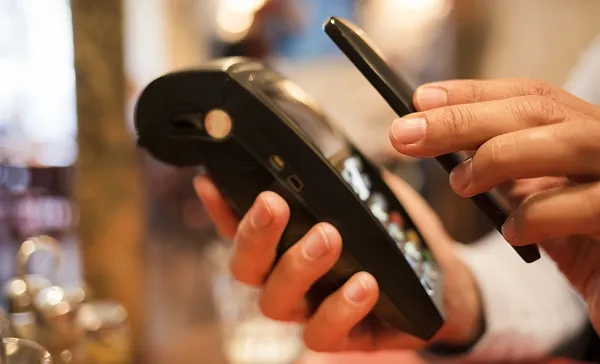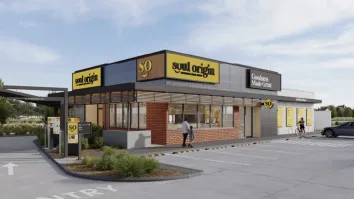
4 digital ordering trends that QSRs can no longer ignore
The foodservice digital ordering in Australia has racked up 117m visits and $1.2b last year, based on The NPD Group.
For those taking their first step, 4 key trends can serve as lampposts to develop more effective and profitable digital ordering strategies, based on a recent high-level Oracle Hospitality Roundtable on digital transformation happening in foodservice held in Sydney and Melbourne.
Looking to allow senior-level dialogue and engagement through these kinds of forums, Oracle invited representatives from top QSR brands such as La Porchetta, Lennard's Chicken, Nando's, Grill'd Healthy Burgers, Town & Country Pizza, Ferguson Plarre Bakehouses, Bubba Pizza, PappaRich, PCG Consultancy, The Sporting Globe, Caltex / Nashi, Fonda, Lord of the Fries, and Love Pollo to share their thoughts on digital ordering trends.
Rise of the “homing” lifestyle
For QSRs that want to understand why digital ordering is becoming more popular, look no further than the home. “Homing” means that people move their social life into their homes, says Ciara Clancy, director Australian foodservice at The NPD Group.
She reckons that instead of going out to restaurants, cinemas and clubs, people are instead spending more time together with other people at their houses and apartments. This means, for example, that rather than dining out in a restaurant and eating outside of the home, more Australians are cooking in their kitchens or entertaining their guests with delivered food.
An industry roundtable participant even noted that in other parts of the world, there is an emerging trend of people renting out the dining areas of buildings and creating communal areas where friends can gather, eat and socialise. While this has not caught on in Australia, it is another manifestation of the emerging homing trend.
“This whole homing thing, it has implications. And looking at the wider area for this, overall ordering methods have changed,” says Clancy. “People are more likely now to ease away from restaurants than ever before. And this is the first year since CREST tracking began in 2009 that we saw on premise occasions fall flat in the industry, and the first time we saw off premise – which includes delivery, drive thru, and carry out – see a 4% percent growth rate.”
“It’s not just a digital thing, people are going off premise, and it’s not just happening in the last twelve months, it’s been happening since 2014,” she adds.
Also, as more Australians work from home, digital ordering promises the comfort and speed of eating hot cooked food without having to open the stove or step out. All it takes in most cases is a few taps on the mobile phone or a laptop, then wait a few minutes to receive the order.
“It’s not surprising when you think about the homing trend,” says Clancy. “When you come home from work, you don’t want to leave your house. You want the convenience offered to you.”
Mobile ordering reaches critical momentum
In the past years the Internet was the primary ordering method for digital consumers – and it still is, due to the limited mobile options available – but 2016 appears to be a turning point with mobile ordering nearly doubling in dollar size to $294m in 2016 from $166m in 2015.
One in four digital orders are now made thru mobile apps instead of thru a website accessed via a computer or an iPad. “I would say that’s more a reflection of what’s out there in the market, so mobile apps are still very limited in accessing who’s doing it,” says Clancy. “I think we’re going to see that change quite dramatically in a very short period of time. The number is still to grow.”
Clancy explains that in a lot of websites, the user experience can be a bit clunky, especially since a lot of websites have been retrofitted to deal with digital ordering. She says some websites “In contrast, mobile apps were developed for the express purpose of being able to order and used in a convenient way.
“There are a lot of websites where you have to put in ten pieces of information before they even let you pick up or deliver pizza. By the time it gets there, you’ve gone to bed and gone to sleep, so good luck with that. And that’s why your satisfaction is not going to do well,” she says.
“It’s not just the behavior is geared toward mobile, but people are happier, and their satisfaction rate is better thru mobile than in non-digital or thru websites, your iPads, your desktops,” says Clancy. “People ultimately have a better experience on mobile apps than they do everything else.”
Kitchen efficiency is key
With mobile ordering on the rise, QSRs should start to consider acquiring or upgrading their kitchen management tools to increase efficiency and reduce errors.
“Kitchen management tools - they simplify communications between front and back of house, enabling better staff organisation and efficiency, and ultimately better guest service,” says Grahame Tate, vice president hotels and F&B, JAPAC Oracle Hospitality.
“In particular, kitchen efficiency can be improved with digital kitchen display systems, by reducing errors, and enhancing food quality and speed of service.”
Tate explains that Oracle Hospitality kitchen display systems have been designed to help restaurants get more done with their kitchen equipment. This is mainly facilitated through faster and clearer communications: Orders are transmitted instantly and status updates are provided constantly. Better data capture systems also enable iterative improvements on kitchen processes.
“You can coordinate the actions of hosts, waitstaff and kitchen staff, to provide better service and build customer loyalty,” he says. “Data on kitchen performance and other service parameters is captured in real time, enabling restaurant operators to maintain precise reports of table and order statuses.”
In the near future, the use of wearable technology can also prove revolutionary in creating efficient kitchen operations, according to Oracle Hospitality’s 2025 Restaurant report, which outlines the current and future use of disruptive technology based on a survey of 250 restaurant operators.
“Developments for improving kitchen operations are mind-boggling, but already within grasp,” said the report, citing how KFC employees have recently tested a training program wearing Google Glass that allowed them to watch a tutorial video, hands-free. Google Glass have also been used by other operators to create training videos from the employee perspective.
“A manager-in-training, for example, can record his actions and observations during peak traffic, then review the video with supervisors to evaluate performance,” the report noted.
More exciting, the evolution of Internet of Things networking could also start to enable wearable devices to automatically “talk” to point-of-sale and kitchen appliances.
“Such enhancements would transform how operators communicate internally with staff and creates all sorts of marketing opportunities to reach consumers inside – and outside – the restaurant,” the report added.
“The Big 4” digital ordering channels
Part of what makes mobile increasingly more appealing to the digital consumer is because of what they typically order, which revolves around The Big 4. Data show that four channels – QSR pizza, coffee, Asian and other ethnic cuisine, and QSR chicken or burger – comprise a whopping 88% of digital orders.
Clancy reckons pizza channels account for only a 5% share of entire visits in the industry, but they capture a 59% share of the digital ordering industry, led by Domino’s. “They are a big chunk of it,” says Clancy of Domino’s dominating the digital ordering space. “But all pizza brands have acquired presence than their total share of the industry”
Asian and other ethnic restaurants are also flourishing, but mainly using third party aggregators. “These are the independents that are basically unknowns, but have completely changed their business model in a very short time because they’re accessible to third party aggregators such as Menulog and Foodora,” says Clancy. “This goes to show you the power of third party aggregators in that dinner home setting, but definitely sounds like there are issues when it comes outside the home setting that need to be ironed out.”
While establishing a presence in a third party aggregator helps a lot in gaining exposure to digital consumers, it does not mean that they will click and order.
“It’s not guaranteed success throwing your brand on UberEATS,” says one roundtable participant.
“We thought that was the catch: Online restaurants available in aggregators. I launched an online brand, only available online, I assumed we could get traction, but we didn’t, which led me to believe that there’s still a lot to say in branding and establishing that customer relationship,” says another participant.
A third participant attested to the power of third party aggregators: “There was always an argument whether we’re going on Menulog, and the answer is always no because we’ve got our own online platform. But not going on Menulog, when you’re not in the game you can’t win it. And what was happening is that a potential customer of ours could go to Menulog, and if you’re not on that page, you’re not going to get considered.”
As for QSR chicken or burger – which includes KFC, McDonald’s and Hungry Jack’s – she reckons that they have been picking up since last year despite stumbles along the way.
“The Mcdonald’s app, that didn’t work for them, that was removed from the market, but it’s only a matter of time before you see a new mobile app,” says Clancy. “KFC have a new mobile app which is really good, their express app that they launched last year.”
Thinking beyond Dinner
For QSRs that want to ride onto the digital ordering bandwagon, thinking about how to approach dinner – and, increasingly, lunch – is going to be crucial for success in this space. For Clancy, dinner remains the number one opportunity when targeting the digital consumer although increased restaurant accessibility is starting to open other dayparts like lunch.
The NPD Group data show 66% of all digital orders in 2016 were for dinner. Notably, digital lunch traffic share has increased to 18% in 2016 from 13% in 2015.
“The key message here is that dinner is your lowest hanging fruit, and it will continue that way for a while, but other dayparts – in particular, lunch – is opening up,” says Clancy. “And if you think, well, we’re going head to head with Domino’s, well, it doesn’t have to be Domino’s because it doesn’t have to be about dinner. When you think about some of your brands, lunch is a more suitable option. There’s massive growth here.”
She recommends QSR brands that work hard to find the access route and execution to make the lunch option work can reap big rewards.
“Domino’s actually already started looking into lunch. They did their lunch promotion last year and they did phenomenal lunch growth when they had a promotion, not because of the lunch offering, but because they said we were open for business,” says Clancy. “They had the access covered – it goes to show you that if you’re offering convenience and you already have the right offering in lunch, it’s open for the taking. Some food for thought, pun intended.”


























